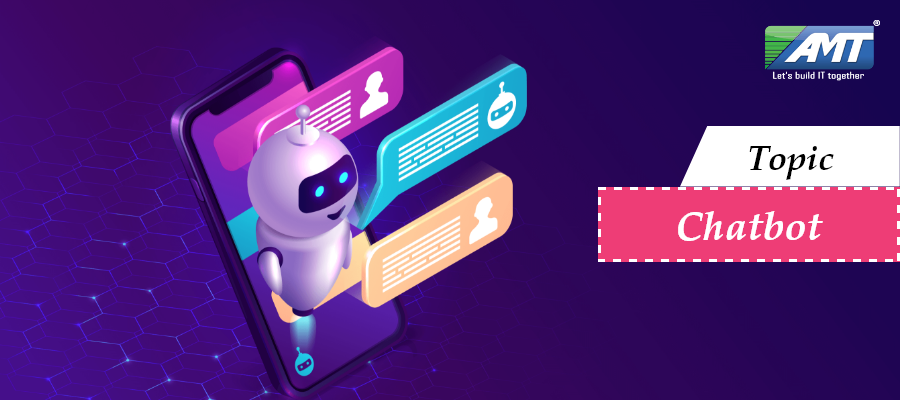A chatbot is a piece of software that conducts a conversation via auditory or textual methods. Such programs are often designed to convincingly simulate how a human would behave as a conversational partner, although as of 2019, they are far short of being able to pass the Turing test. Chatbots are typically used in dialog systems for various practical purposes including customer service or information acquisition. Some chatbots use sophisticated natural language processing systems, but many simpler ones scan for keywords within the input, then pull a reply with the most matching keywords, or the most similar wording pattern, from a database.
The term “ChatterBot” was originally coined by Michael Mauldin (creator of the first Verbot, Julia) in 1994 to describe these conversational programs. Today, most chatbots are accessed via virtual assistants such as Google Assistant and Amazon Alexa, via messaging apps such as Facebook Messenger or WeChat, or via individual organizations’ apps and websites. Chatbots can be classified into usage categories that include conversational commerce (e-commerce via chat), education, entertainment, finance, health, news, and productivity.
Beyond chatbots, Conversational AI refers to the use of messaging apps, speech-based assistants and chatbots to automate communication and create personalized customer experiences at scale.
Many companies’ chatbots run on messaging apps or simply via SMS. They are used for B2C customer service, sales and marketing.
In 2016, Facebook Messenger allowed developers to place chatbots on their platform. There were 30,000 bots created for Messenger in the first six months, rising to 100,000 by September 2017.
Since September 2017, this has also been as part of a pilot program on WhatsApp. Airlines KLM and Aeroméxico both announced their participation in the testing; both airlines had previously launched customer services on the Facebook Messenger platform.
The bots usually appear as one of the user’s contacts, but can sometimes act as participants in a group chat.
Many banks, insurers, media companies, e-commerce companies, airlines, hotel chains, retailers, health care providers, government entities and restaurant chains have used chatbots to answer simple questions, increase customer engagement, for promotion, and to offer additional ways to order from them.
Previous generations of chatbots were present on company websites, e.g. Ask Jenn from Alaska Airlines which debuted in 2008 or Expedia’s virtual customer service agent which launched in 2011. The newer generation of chatbots includes IBM Watson-powered “Rocky”, introduced in February 2017 by the New York City-based e-commerce company Rare Carat to provide information to prospective diamond buyers.
Used by marketers to script sequences of messages, very similar to an Autoresponder sequence. Such sequences can be triggered by user opt-in or the use of keywords within user interactions. After a trigger occurs a sequence of messages is delivered until the next anticipated user response. Each user response is used in the decision tree to help the chatbot navigate the response sequences to deliver the correct response message.
Other companies explore ways they can use chatbots internally, for example for Customer Support, Human Resources, or even in Internet-of-Things (IoT) projects. Overstock.com, for one, has reportedly launched a chatbot named Mila to automate certain simple yet time-consuming processes when requesting for a sick leave. Other large companies such as Lloyds Banking Group, Royal Bank of Scotland, Renault and Citroën are now using automated online assistants instead of call centres with humans to provide a first point of contact. A SaaS chatbot business ecosystem has been steadily growing since the F8 Conference when Facebook’s Mark Zuckerberg unveiled that Messenger would allow chatbots into the app. In large companies, like in hospitals and aviation organizations, IT architects are designing reference architectures for Intelligent Chatbots that are used to unlock and share knowledge and experience in the organization more efficiently, and reduce the errors in answers from expert service desks significantly. These Intelligent Chatbots make use of all kinds of artificial intelligence like image moderation and natural language understanding (NLU), natural language generation (NLG), machine learning and deep learning.
Many high-tech banking organizations are looking to integrate automated AI-based solutions such as chatbots into their customer service in order to provide faster and cheaper assistance to their clients who are becoming increasingly comfortable with technology. In particular, chatbots can efficiently conduct a dialogue, usually replacing other communication tools such as email, phone, or SMS. In banking, their major application is related to quick customer service answering common requests, as well as transactional support.
Several studies report significant reduction in the cost of customer services, expected to lead to billions of dollars of economic savings in the next 10 years. In 2019, Gartner predicted that by 2021, 15% of all customer service interactions globally will be handled completely by AI. A study by Juniper Research in 2019 estimates retail sales resulting from chatbot-based interactions will reach $112 billion by 2023.
Chatbots are increasingly present in businesses and often are used to automate tasks that do not require skill-based talents. With customer service taking place via messaging apps as well as phone calls, there are growing numbers of use-cases where chatbot deployment gives organisations a clear return on investment. Call centre workers may be particularly at risk from AI-driven chatbots.
The above is a brief about Chatbots. Watch this space for more updates on the latest trends in Technology.
